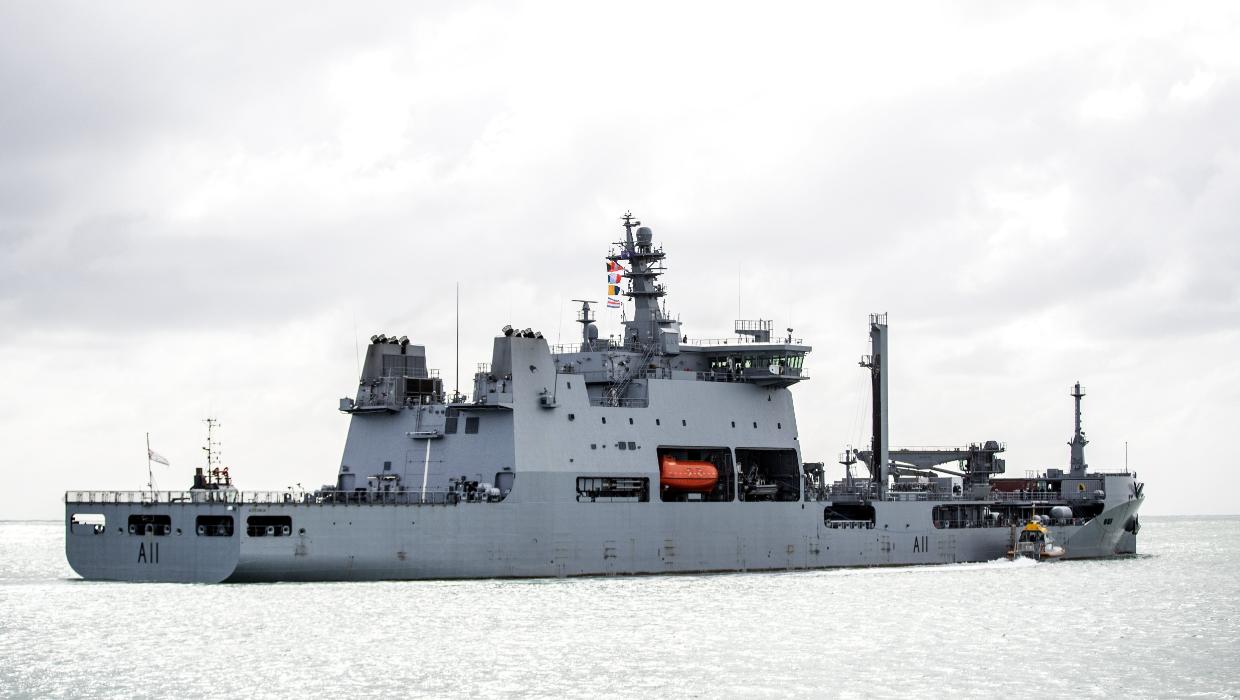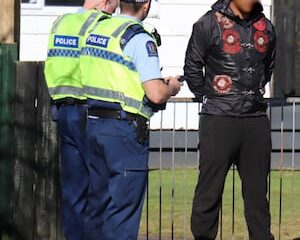Sports
New Zealand Defence Force Enhances Combat Readiness in Global Exercises

New Zealand’s Defence Force has recently ramped up its military exercises, signaling a commitment to enhance its combat readiness amidst rising geopolitical tensions in Asia and the Pacific. The Defence Force has engaged in a series of exercises involving allied nations, including Australia, the United Kingdom, Malaysia, and Singapore, while also conducting operations in the contested South China Sea.
Defence Minister Judith Collins has called for the military to “step up,” emphasizing that the Defence Force’s primary role is to defend national interests. “We’re back in the game… Defence Force is actually about defence. It’s not about hug and cuddles. It’s actually, get on do the job,” Collins stated during a recent briefing.
The HMNZS Aotearoa, New Zealand’s navy tanker, participated in a collaborative exercise in the South China Sea alongside forces from the Philippines, the United States, and Australia. This operation included anti-submarine warfare drills, which were openly monitored by China’s People’s Liberation Army. The Chinese government criticized the involvement of “non-regional countries” in what it deemed provocative actions that could undermine regional stability.
Robert Welford, commanding officer of the Aotearoa, highlighted the importance of these exercises, stating, “This part of the world is extremely important to New Zealand. We’ve got our friends in this part of the world, and we’re going to operate with them.” He further noted that the operations are intended to maintain freedoms as outlined by the United Nations Convention on the Law of the Sea.
In addition to naval exercises, the Defence Force’s air components have been active. A P-8A Poseidon surveillance aircraft has been deployed to Asia for a Japanese-led annual exercise in the Philippine Sea, participating alongside military personnel from the United States, Australia, Canada, and France. Following this, the aircraft will be stationed in Japan to assist in monitoring United Nations sanctions against North Korea.
Recent training operations have also included ground troops utilizing privately owned fighter jets. The New Zealand Army’s 16th Field Regiment coordinated simulated attacks on a fictional island under occupation, employing Czech-made Albatros training jets provided by Fighter Jets NZ. This firm, which offers civilian flight experiences, has facilitated these military drills to compensate for the absence of operational fighter jets in New Zealand’s air force.
Throughout October 2023, the army and air force conducted “Exercise Cassino” across the South Island, simulating deployments to fictional countries experiencing unrest. The exercises involved capturing militia leaders and securing drone-making facilities, illustrating the Defence Force’s adaptability in various operational scenarios.
The German air force has also collaborated with New Zealand, sending five aircraft to the Woodbourne base for a two-week exercise supported by local military personnel. Additionally, commanders from Australia, the UK, Malaysia, and Singapore gathered for “Exercise Suman Warrior,” a command post exercise focused on strategic operations within a simulated conflict zone.
According to Professor David Capie, director of the Centre for Strategic Studies at Victoria University, the Defence Force is increasingly projecting a “combat face” in its operations. He noted, “There’s an intent to emphasize that actually this is a more dangerous period… that our strategic context is much more challenging.”
While many recent activities have focused on combat readiness, some efforts highlight the more humanitarian aspects of military engagement. Recently, the Defence Force announced the deployment of a navy musician to Antarctica, who was equipped with a plastic instrument designed for children to withstand harsh conditions, showcasing the diverse roles the military plays beyond combat.
As New Zealand’s Defence Force continues to enhance its operational capabilities, officials remain vigilant about the evolving security landscape in the region, asserting their commitment to working alongside international partners to ensure stability and security.
-

 Sports2 months ago
Sports2 months agoNetball New Zealand Stands Down Dame Noeline Taurua for Series
-

 Entertainment2 months ago
Entertainment2 months agoTributes Pour In for Lachlan Rofe, Reality Star, Dead at 47
-

 Entertainment4 weeks ago
Entertainment4 weeks agoNew ‘Maverick’ Chaser Joins Beat the Chasers Season Finale
-

 Sports4 days ago
Sports4 days agoEli Katoa Rushed to Hospital After Sideline Incident During Match
-

 Sports2 months ago
Sports2 months agoSilver Ferns Legend Laura Langman Criticizes Team’s Attitude
-

 Politics1 month ago
Politics1 month agoNetball NZ Calls for Respect Amid Dame Taurua’s Standoff
-

 Entertainment2 months ago
Entertainment2 months agoKhloe Kardashian Embraces Innovative Stem Cell Therapy in Mexico
-

 World3 months ago
World3 months agoPolice Arrest Multiple Individuals During Funeral for Zain Taikato-Fox
-

 Sports3 months ago
Sports3 months agoGaël Monfils Set to Defend ASB Classic Title in January 2026
-

 Entertainment1 month ago
Entertainment1 month agoTyson Fury’s Daughter Venezuela Gets Engaged at Birthday Bash
-

 Sports1 month ago
Sports1 month agoHeather McMahan Steps Down as Ryder Cup Host After Controversy
-

 World2 weeks ago
World2 weeks agoSevere Winds Hit New Zealand, Over 100 Flights Canceled




















